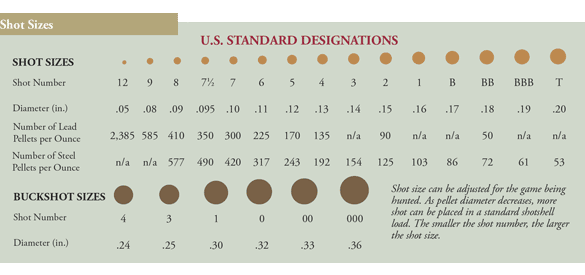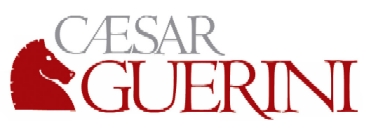The Best Patterning Shotshells: Joe Hunter Testing
For many years, Joe Hunter has shared his patterning results freely. To really know what is going on, you'll have to do your own patterning work in your own shotgun: there is no substitute for that. Barrel inside diameters vary widely, as do choke tube markings. Just because a choke tube is designated as “Modified” means nothing. It might be a .010 inch constriction or it might be a .025 inch constriction or something in-between.
Anyone who suggests that a “Light Modified” choke, for example, is a "great" choke or somehow throws "beautiful patterns" has absolutely no clue what there are talking about, for a “Light Modified” designation on a choke tube has no specific meaning. No dumb choke tube knows what barrel inside diameter it might be screwed into.

We also have a problem with exact shot size. SAAMI voluntary performance standards state that game shot (actual shot sizes falling into this category not specified) are allowed a nominal diameter tolerance of ± 0.010 inch, target shot (again actual sizes not specified) are allowed a diameter tolerance of ± 0.005 inch. According to SAAMI voluntary performance standards for target shot, a group of pellets could vary from as large as No. 7 to as small as # 8 and still be designated as #7½ by the manufacturer. So-called # 8½ lead shot could be as large as #8 to as small as No. 9 and still be designated as #8½.
Number 2 steel shot is .150 inch. However, either #1 steel (.160 in.) or #3 steel (.140 in.) could be called #2 steel and comport to SAAMI standards. This is one of the reasons that pellet counts vary in steel shotshells, for #2 steel doesn't have to be #2 steel to be designated as #2 steel and sold as #2 steel.
Patterning results from a 12-gauge
3" Remington 870 Special Purpose with a 28" barrel and
factory flush Rem-chokes (pattern average of five, 30" post-shot
scribed circle, yardage taped muzzle to target, in-shell pellet count
average of five, and true choke constriction from bore gauge).
40
YARDS – Modified flush factory Rem-choke (.018”
constriction)
Federal Speed-Shok 3" 1 1/4 oz #2
steel (154 pellets) pattern 115 (75%)
Federal Premium
Ultra-Shok 3" 1 1/4 oz #2 steel (147 pellets) pattern 109
(74%)
Federal Black Cloud 3" 1 1/4 oz #2 steel (144 pellets)
pattern 92 (64%)
Fiocchi Golden 3” 1 ¼ oz #2 steel (156
pellets) pattern 115 (74%)
Hevi-Metal 3" 1 1/4 oz #2 / #5
(164 pellets) pattern 93 (58%)
HEVI-STEEL 3" 1 1/4 oz #2
steel (148 pellets) pattern 100 (68%)
Kent Fasteel 3" 1 1/4
oz #2 steel (155 pellets) pattern 103 (66%)
Kent Silver Steel 3"
1 1/4 oz #2 steel (153 pellets) pattern 112 (73%)
Remington
Sportsman Hi-Speed 3" 1 1/4 oz #2 steel (152 pellets) pattern
110 (72%)
Remington Nitro Steel 3" 1 1/4 oz #2 steel (151
pellets) pattern 117 (77%)
Winchester Xpert Hi-Velocity 3"
1 1/4 oz #2 steel (146 pellets) pattern 106 (73%)
Winchester
Drylok Super-X 3" 1 1/4 oz #2 steel (162 pellets) pattern 121
(75%)
Winchester Elite Blind Side 3" 1 3/8 oz #2 steel
(176 pellets) pattern 104 (59%)
The highest efficiency patterning steel #2 shotshell tested is the Remington Nitro Steel 3" 1 1/4 oz #2 steel that hit 77% with the .018 inch constriction choke. The Winchester Drylok Super-X 3" 1 1/4 oz #2 steel patterned slightly less efficiently than the Remington at 75%, yet put an average of four more pellets in the 30 inch circle. The three shells that performed extremely well, at or above 75%, were the Remington Nitro Steel, the Winchester Drylok, and the Federal Speed-Shok.
The most miserable, pathetically poorly patterning shells were below 60%: Hevi-Metal at 58%, Winchester Blind Side at 59%, clearly two shells to avoid. The only other shell that did less than 65% was Federal Black Cloud, at 64%. "HEVI-Metal® shells offer 20% more pellets on target than any super steel on the market" is precisely what Hevi-Shot claims. I guess if you are going to lie like a rug, you might as well make it a really big one. Hevi-Shot, yet again, is a great choice for the P.T. Barnum Flying Pig Award.
Patterning results from a 12-gauge Browning Citori with 28" Invector-plus barrels using Briley flush chokes (patterns average of five, 30" post-shot scribed circle, yardage taped muzzle to target, and in-shell pellet count average of five).
40 YARDS / Full
Win
AA Heavy 2 ¾” 1 1/8 oz #7 ½ lead (377 pellets) / pattern 299
(79%)
Rem Gun Club 2 ¾” 1 1/8 oz #7 ½ lead (375 pellets) /
pattern 272 (73%)
Rem Premier STS 2 ¾” 1 1/8 oz #7 ½ lead (408
pellets) / pattern 321 (79%)
Rem Premier Nitro 2 ¾”
1 1/8 oz #7 ½ lead (420 pellets) / pattern 321 (76%)
Both the Remington Premier STS and Winchester AA 1-1/8 oz. shells averaged 79%, but the Remington STS and Nitro shells put (by far) the most pellets in the 30 inch circle, at 321 pellets. This is as good of an example as any why high antimony shells pay off. Remington's popular, economical Gun Clubs are 2% antimony, while Remington's Premier STS and Nitro 27 target loads are 6% antimony.
What I'm interested in, at the moment, is how close the new, 4% antimony Remington American Field & Clay sport loads can come to the 6% antimony shot performance level, as well as the new Federal Premium Gold Medal Grand shotshells that are said to be at the “5% antimony equivalent” hardness level.
Copyright 2017 by Randy Wakeman. All Rights Reserved.












